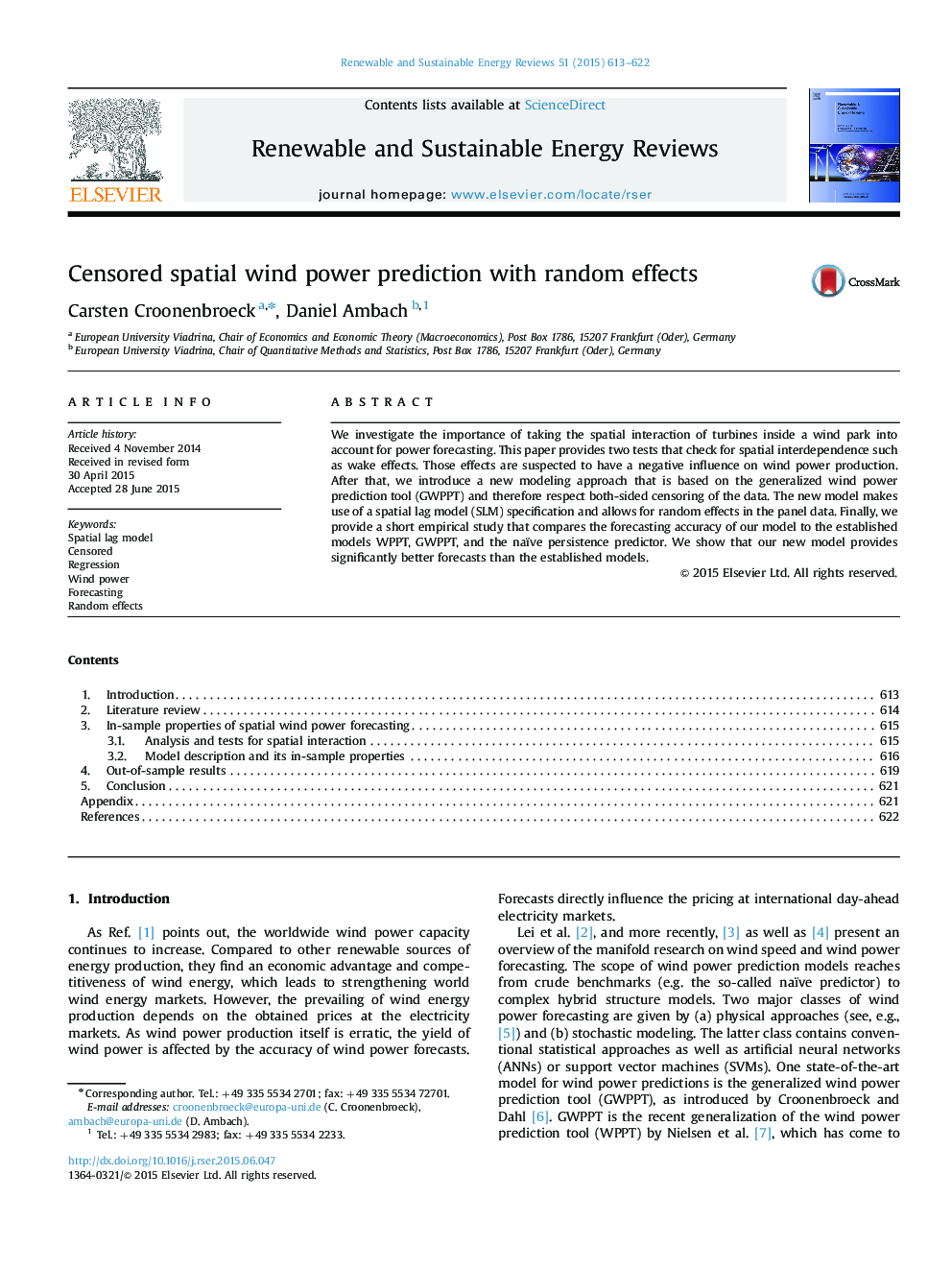| Article ID | Journal | Published Year | Pages | File Type |
|---|---|---|---|---|
| 8115764 | Renewable and Sustainable Energy Reviews | 2015 | 10 Pages |
Abstract
We investigate the importance of taking the spatial interaction of turbines inside a wind park into account for power forecasting. This paper provides two tests that check for spatial interdependence such as wake effects. Those effects are suspected to have a negative influence on wind power production. After that, we introduce a new modeling approach that is based on the generalized wind power prediction tool (GWPPT) and therefore respect both-sided censoring of the data. The new model makes use of a spatial lag model (SLM) specification and allows for random effects in the panel data. Finally, we provide a short empirical study that compares the forecasting accuracy of our model to the established models WPPT, GWPPT, and the naïve persistence predictor. We show that our new model provides significantly better forecasts than the established models.
Related Topics
Physical Sciences and Engineering
Energy
Renewable Energy, Sustainability and the Environment
Authors
Carsten Croonenbroeck, Daniel Ambach,
